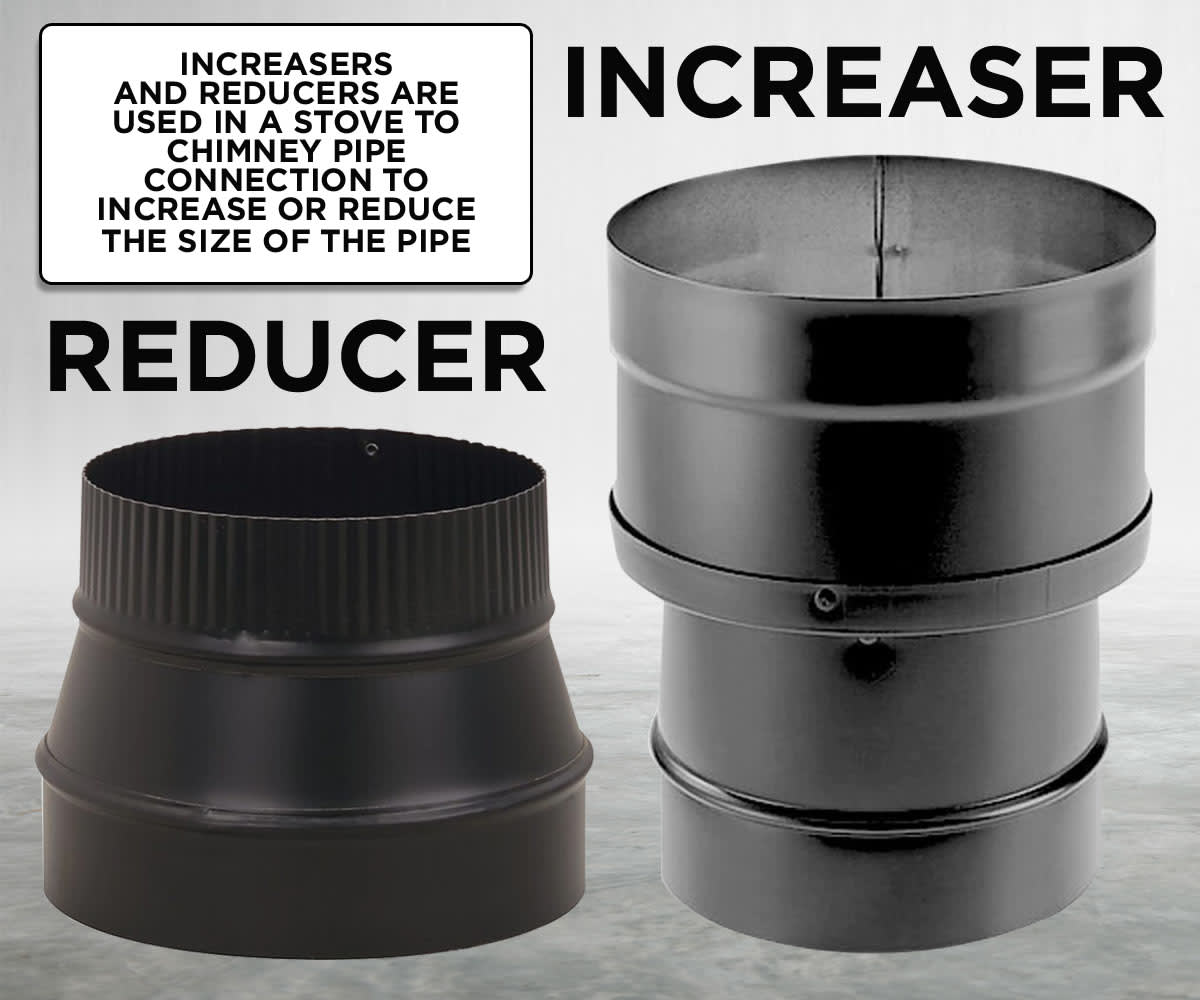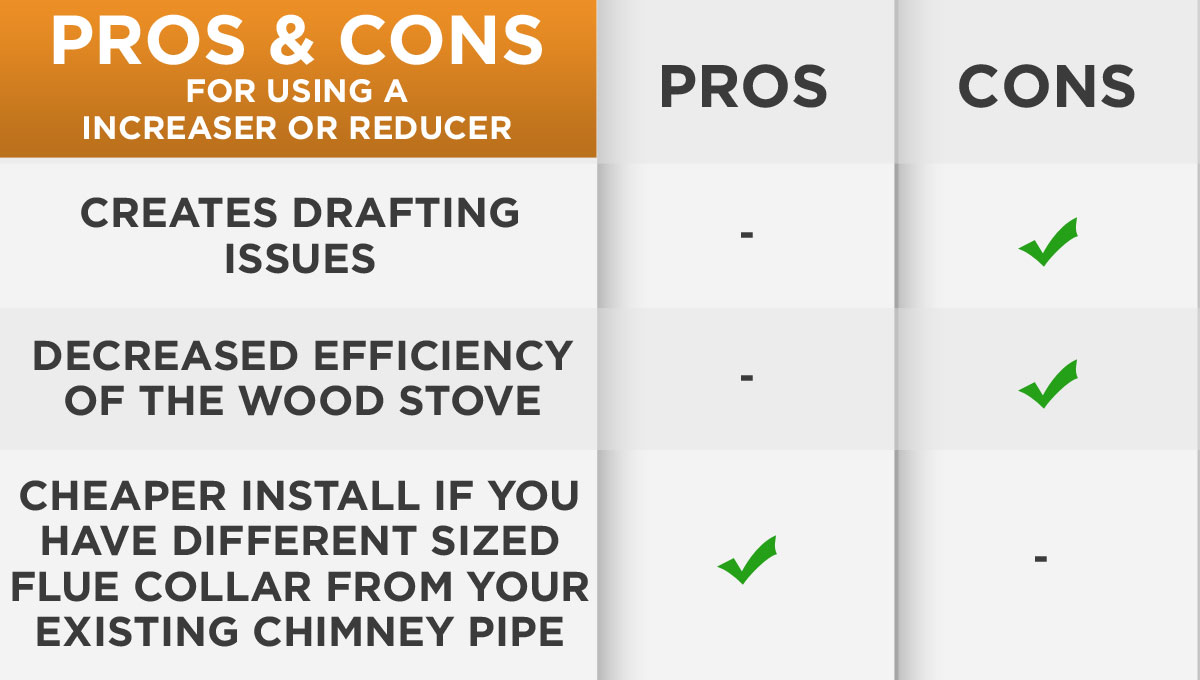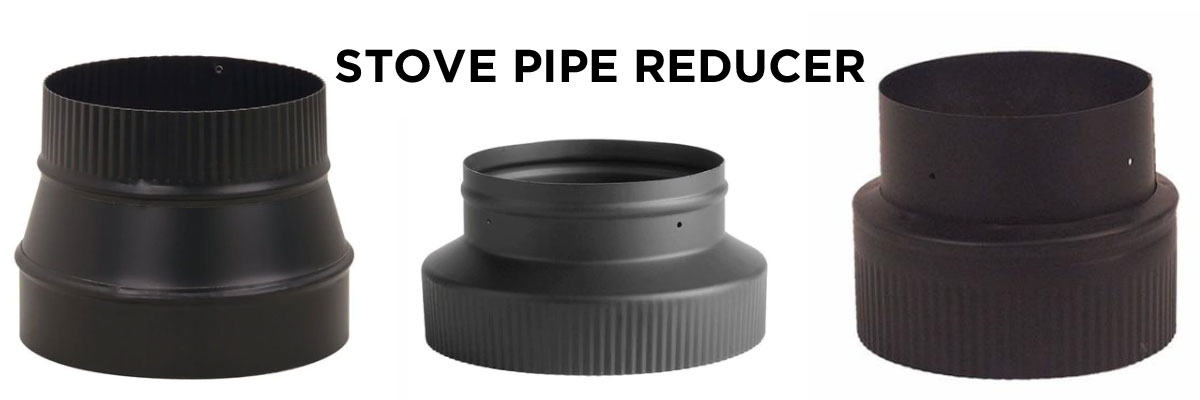Sep 24th 2020
Stove Pipe Increasers and Reducers
We always recommend using the same sized Stove Pipe and Chimney Pipe for your entire install. Never use a Stove Pipe Reducer unless your appliance's manual recommends it.
What happens if my chimney pipe is bigger or smaller than the flue collar of my new wood stove? We hear this question often and offer multiple solutions. However, these solutions are not always ideal or recommended, you will need to determine which option is the best for your install. In order to connect different sized stove pipe to chimney pipe you will need to use an increaser or reducer.
Using an increaser or reducer will create a few problems with your install. The first problem is since you are not running the same sized pipe all the way through the ceiling, you will have drafting issues. Drafting issues will cause smoke to come into the room where your stove is at and can also hinder you from easily lighting your stove and keeping it going.

How do I establish draft in a chimney?
Chimney pipe brings in cold air from the outside but you also have warm air from side inside where your stove and stove pipe are. The cold and warm air both exist in your stove pipe before you light your stove. Establishing a good draft means that you need to heat up that pipe so the temperature is consistent all the way through allowing the the warm air to rise. We recommend lighting a smaller fire that will gradually heat up the pipe until the cold air is out of the pipe. When you use different sized stove pipe with chimney pipe this can cause an issue with that consistency in temperature and create a poor draft.
Establishing a draft can be tricky if you do not use the same sized pipe so this may be enough reason for you to either find a stove with the correct flue size or replace your chimney pipe. The other issue we see is that the stove is not going to perform as well when you do not run the same sized pipe all the way up to the roof. When the diameter changes, your stove is going to not be as efficient.
We also recommend that you do not increase and decrease the size of your stove pipe to chimney pipe by more than 2". A common installation for using an increaser is going from 6" stove pipe to 8" chimney pipe. A common installation for using an reducer is going from 8" stove pipe to 6" chimney pipe.
Why would I use an Increaser or Reducer?
The benefit for using an increaser or reducer is that you will not need to replace the existing chimney pipe that you have if the flue of your stove is a different size. This can save some up front expense and cost but in the long run you want to install the correct sized pipe from the stove all the way up to the roof.

Now that you have examined the pros and cons of installing an increaser or reducer, you will need to make a decision on what is best for you and your installation.
If you do decide not to replace your chimney pipe all the way up, then you will need to figure out if you need an increaser or reducer and where to put it in your installation.

If your chimney pipe is larger than the flue of the stove, then you will need an increaser. For example, if you have a flue collar for a wood stove that is 6" (this is the most common diameter) but your chimney pipe is 8" then you would need a 6"-8" increaser, this will allow you to connect the 6" stove pipe to the 8" chimney pipe.
You will want to install the increaser as close to the chimney pipe as possible so you get as long of a run of the correct pipe coming from the stove. If you are installing DuraBlack, use their slip increaser with trim piece and install that at the ceiling support box or at the finishing collar. If you have DVL chimney pipe you will want to install the DVL increaser. We carry increasers for the following brands: DuraBlack, DVL, HeatFab, DSP and Snap-Lock.

If your chimney pipe is smaller than the flue of the stove, then you will need a reducer. For example, if you have a flue collar for a wood stove that is 8" but your chimney pipe is 7" then you would need a 8"-7" reducer. The reducer is often installed at the flue collar of the stove.
Between the increaser and reducer, the reducer is the least recommended method. Using a reducer is never recommended unless your appliance manuals says that you can use one in your installation.
Check out our wide selection of Stove Pipe and Chimney Pipe.

